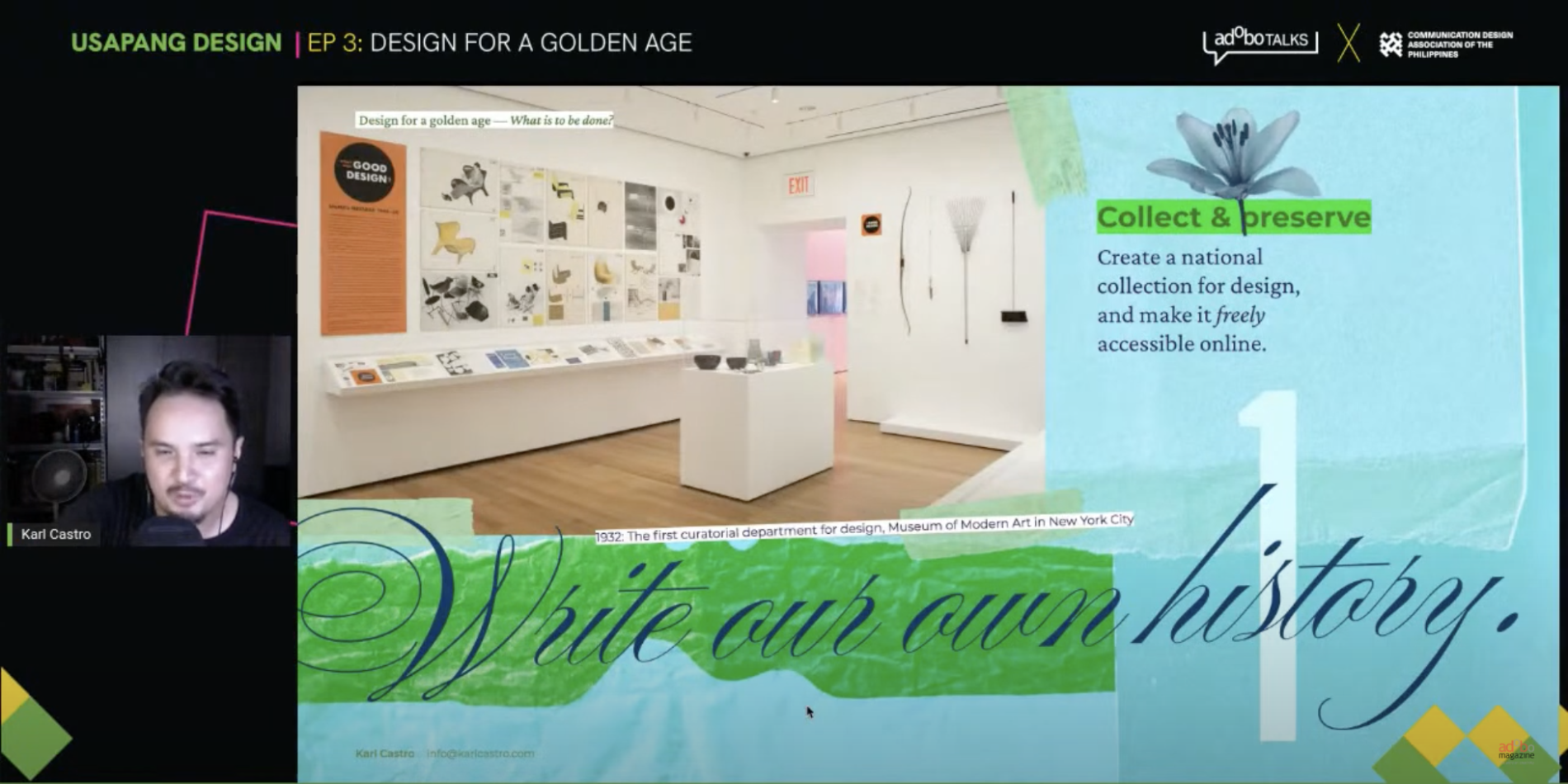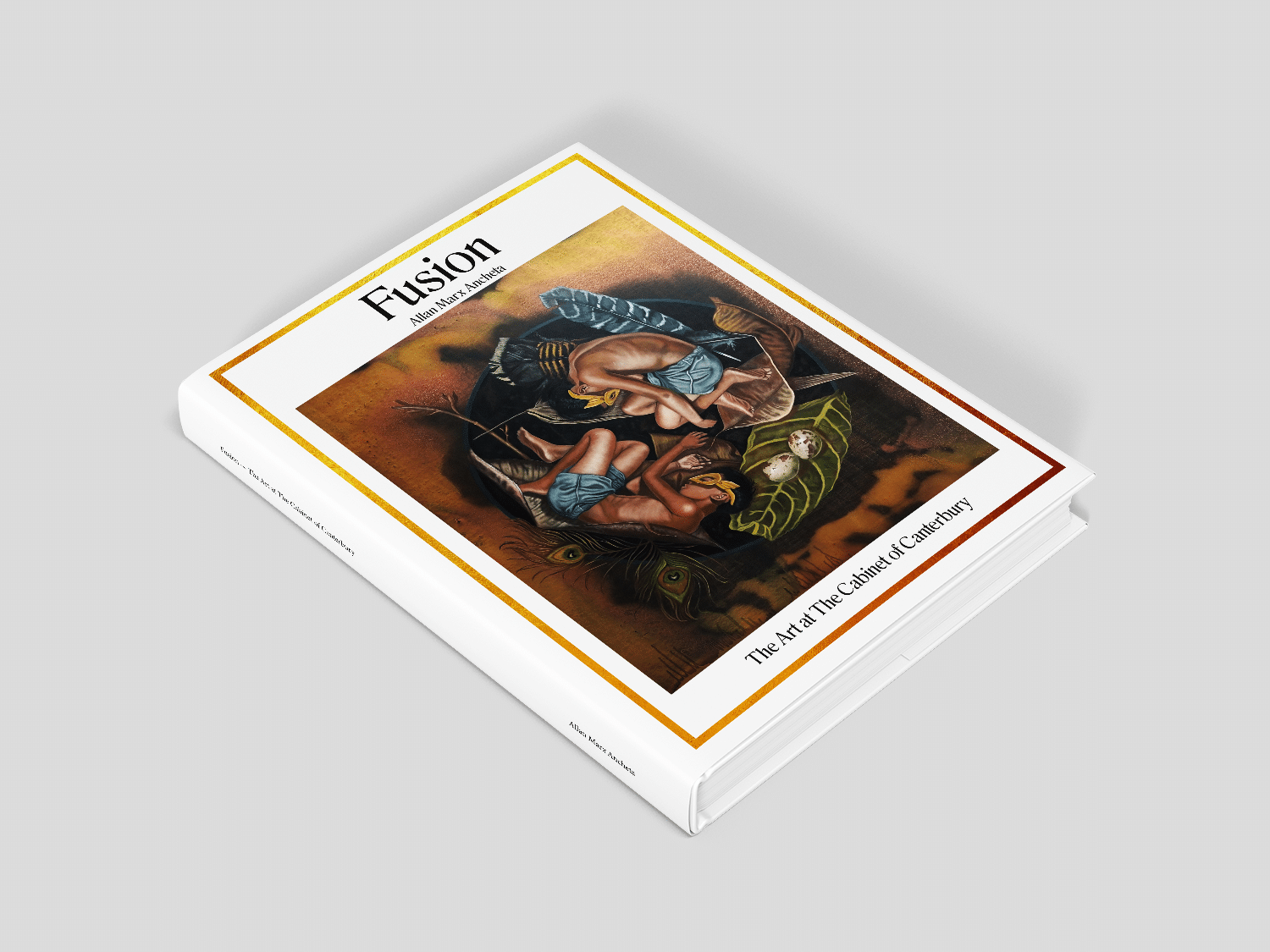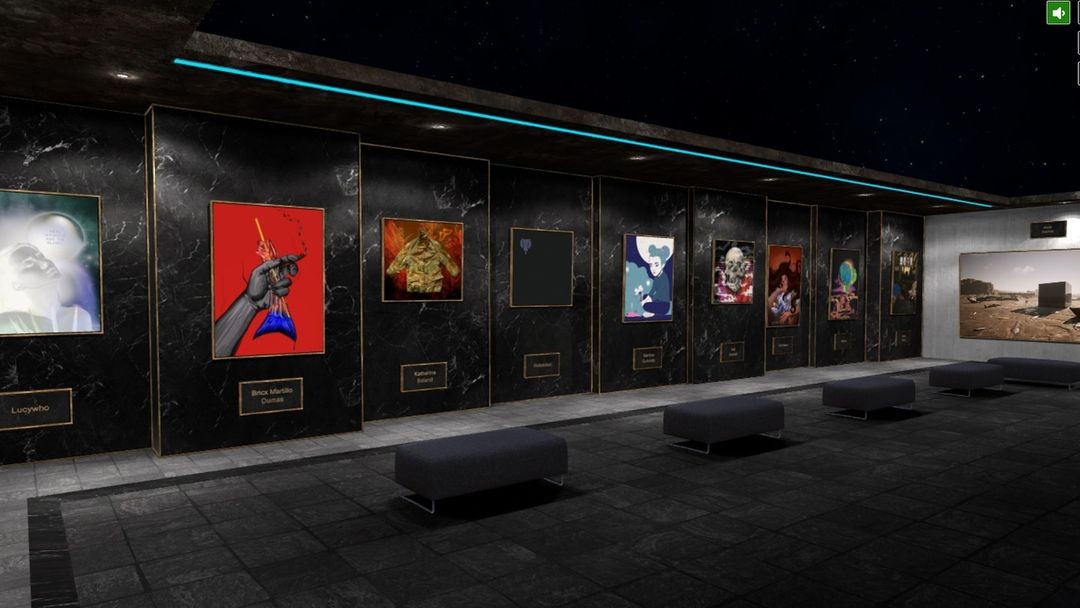
Karl Castro on how the “golden age” of Filipino design never ended
By CREATEPhilippines
October 20, 2021
As part Usapang Design, a series of talks on visual communication organized by adobo magazine and the Communication Design Association of the Philippines (CDAP), Karl Castro convened an engaging session positing the question: Are we in a golden age of design?
Karl Castro is an acclaimed book designer for cultural and scholarly volumes, as well as a poster designer for diverse works of Filipino cinema. He designed, curated, and participated in exhibitions on institutional memory, contemporary cultural issues, and community-based creative work. Castro is also a lecturer at the Department of Fine Art of Interdisciplinary Studies at Ateneo De Manila University.
Castro’s talk explores design’s pivotal role in the construction of image and reality by jumping off from the trope of the “golden age'' - a term often used to describe the perceived success of a generation. He uses the Marcos era as a case study - a period many attribute as the birth of Filipino design with the establishment of the Design Center of the Philippines in 1973.
Mandated by the Presidential Decree 279, the DCP sought to develop, enhance, and promote the design of handicrafts manufactured in the Philippines. It is during this point of the session Castro presents a multi-volume catalogue published in 1979, featuring an array of Filipino products showcasing design under Marcos. Castro proceeds to critically analyze the products as well as design elements featured in the catalogue and how it helped promote particular points of view. This was evident, for example, in the attempt to make more modernist motifs by the Marcoses, suggesting a more developed Filipino society.
Using this example, Castro encouraged audiences to think more critically - namely, that to better understand design, we have to understand the process in which a culture is made. To attribute the Marcos era as the only “golden age” of design betrays the fact that culture is separate from the products it creates when it is, in fact, part of everyday living. Indeed, the Oxford Dictionary defined a golden age as “an idyllic, often imaginary, past time of peace, prosperity, and happiness.”
Castro provides his own recommendations for carrying on the legacy of Filipino design - one which ensures dialogue and exchange gives birth to new disciplines and paradigms. This includes more support to fund research initiatives aimed at answering design questions, creating an accessible national collection for design, and using design to pursue justice. To pursue justice means not only contributing to important causes, but also fostering solidarity with people beyond the networks we know.
Castro ends the presentation with a food for thought: “For whom, and with whom, are you creating?”
For more information on adobo Talks, visit adobo magazine and CDAP’s Facebook pages.



